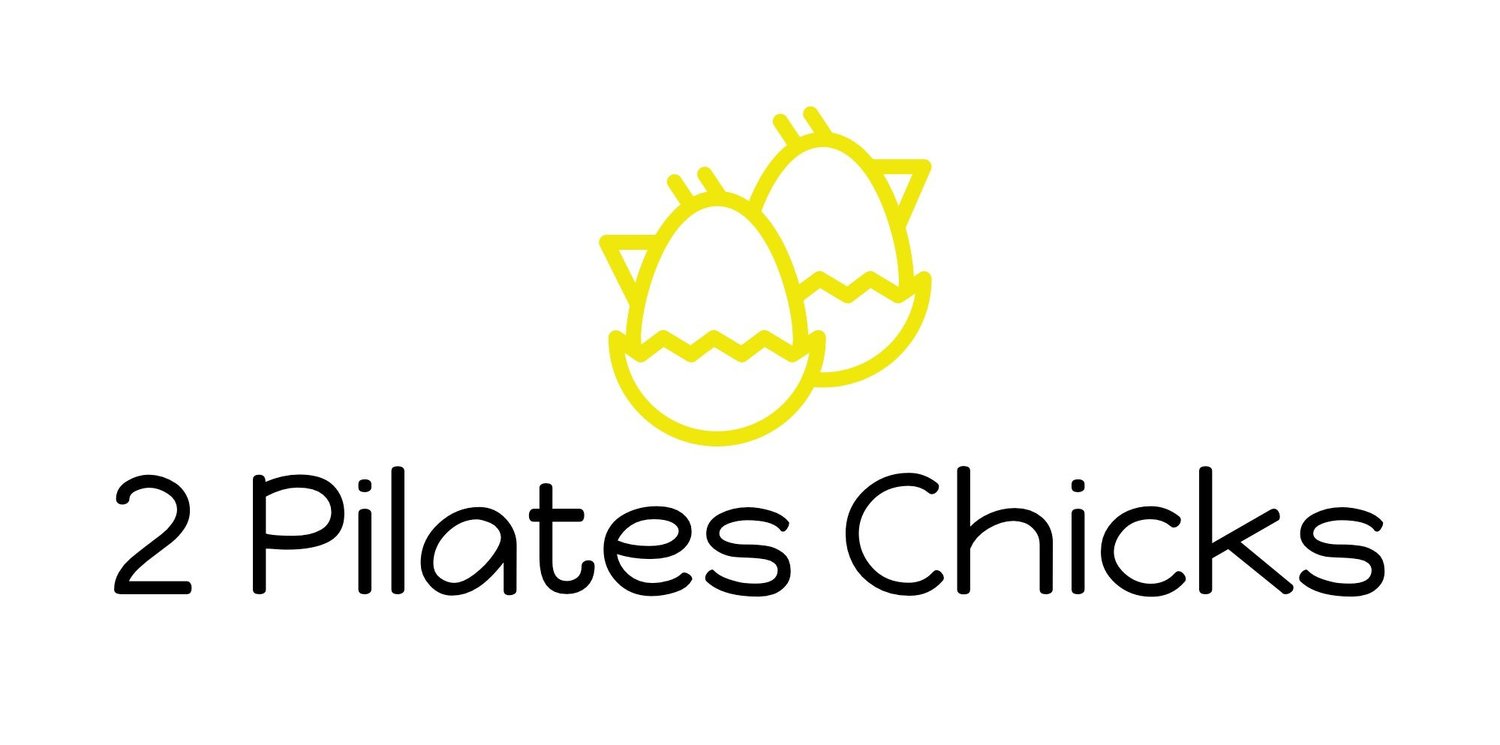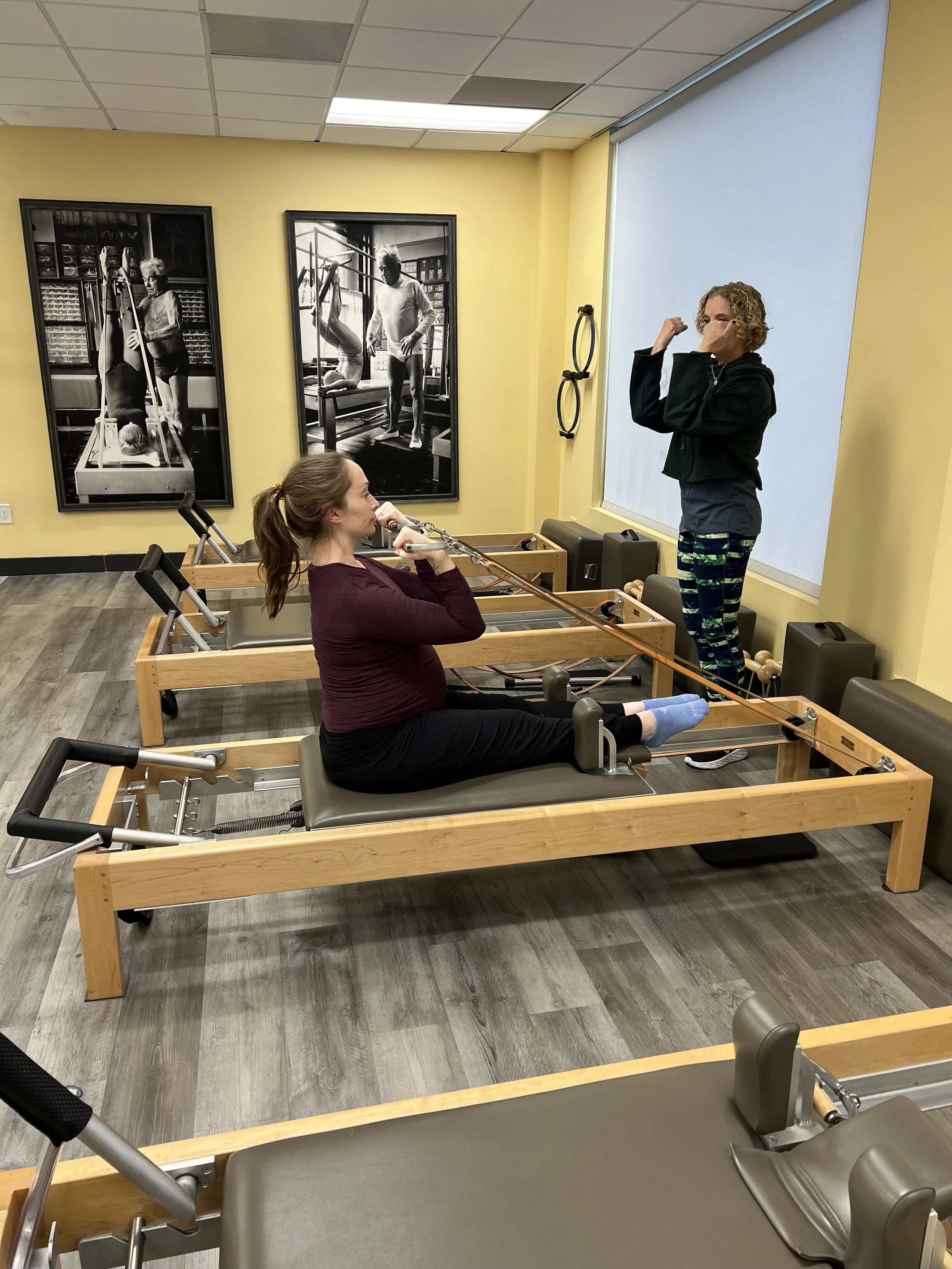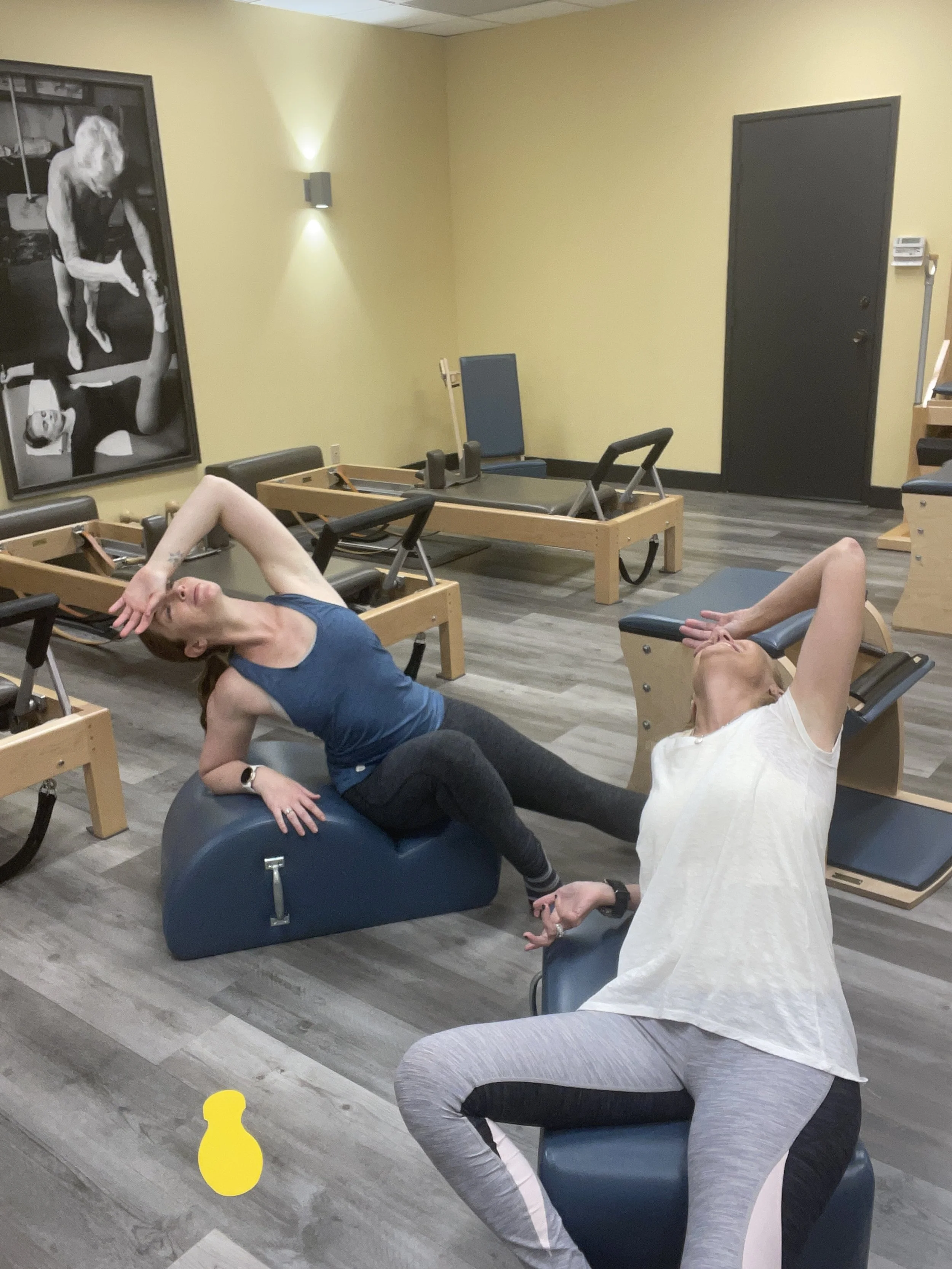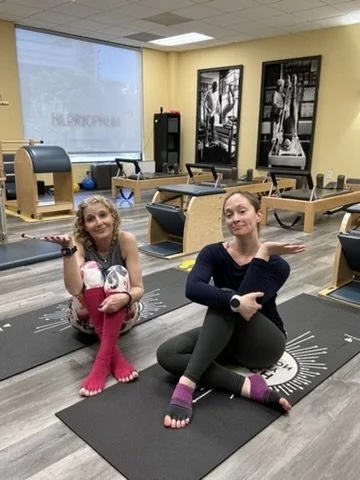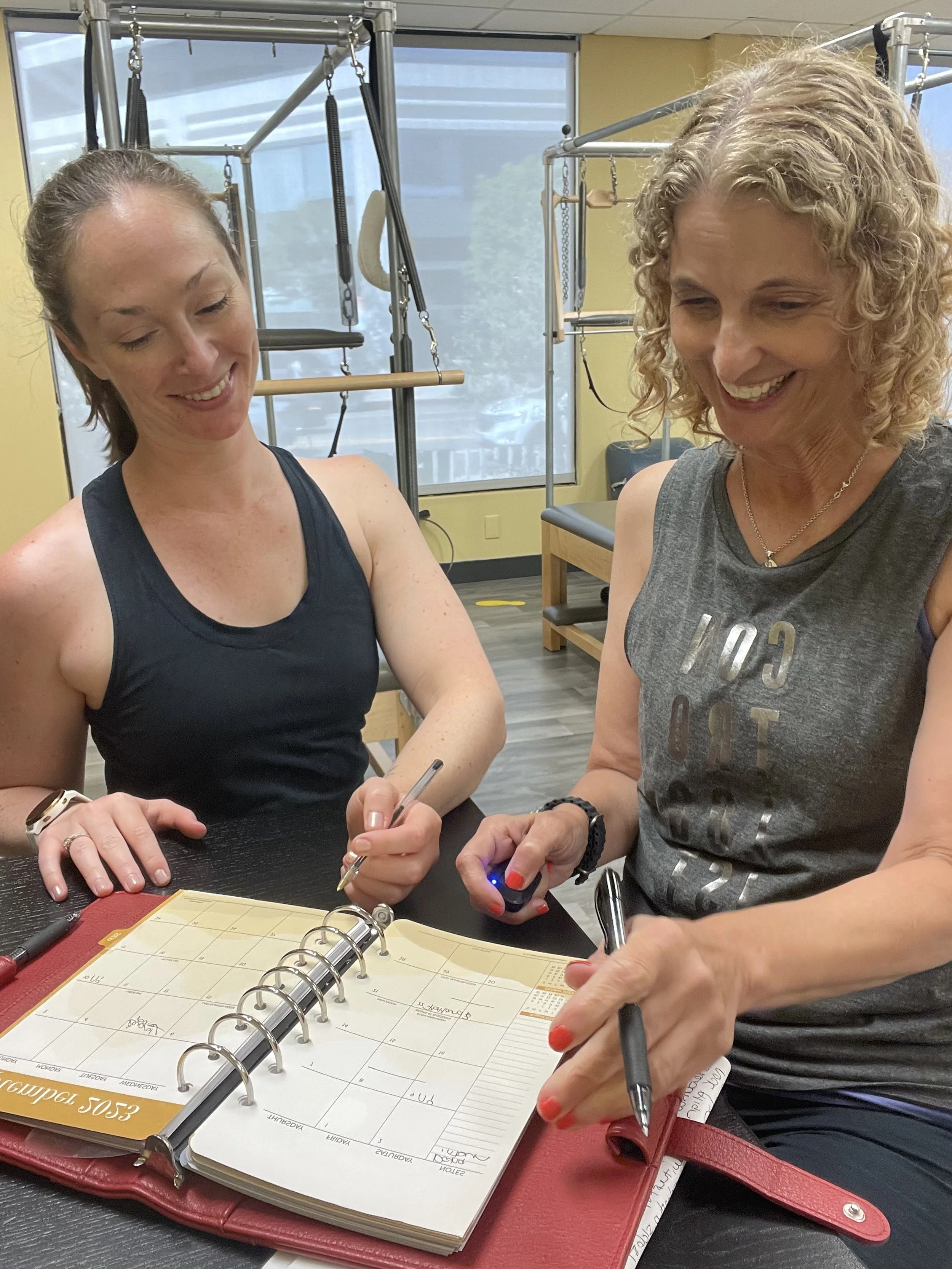What can you expect in the career of teaching Pilates?
What does one expect the career of teaching Pilates to be like? How do we know what it will be like when we're just starting out as new teachers? What expectations do we have as new teachers that aren't realities in the career?
In Season 6 Episode 1, “Expectations vs Realities of Teaching Pilates”, we discuss these differences between what new teachers expect their careers to look like, and the realities of the day-to-day tasks of a teacher. In this episode, we go over the influence of social media on what new teachers expect from teaching, class capacity, client scheduling, studio type, client interest, and the other miscellaneous tasks besides teaching that build a career for a Pilates teacher.
Many new teachers see the depiction on social media of teaching Pilates, with a full client schedule and every group class at full capacity, in beautiful picturesque studios, with athletic and engaged clients. Many experienced teachers have noticed an increase in these unrealistic expectations from newer teachers, setting them up for disappointment and frustration, occasionally leading to new teachers leaving the industry.
One of the biggest expectations of teaching that is not a reality is about client scheduling and class capacity. New teachers expect that they will get hired to teach by a studio, gym, or other type of business, and walk into full classes and have a book of clients handed over to them. Sometimes this can happen when a teacher is taking over a previously filled group class, or if a studio has a client wait-list, or a teacher who has moved studios leaving clients in need of a new teacher.
However, new teachers usually have to be patient and slowly build up their client base. It can take many months to build a steady schedule, especially for teachers who focus on private sessions. Even when we're hired by a corporate studio, it takes time to build a schedule. Patience and resilience are the most important attributes for new teachers.
Classes are not always full. There are empty classes, classes that we have to work to build for months before we see some traction and consistency. There are slow times of the year when clients and classes we've already established suddenly are gone for a season or holiday. The Pilates and fitness industry is cyclical throughout the year, and some seasons are significantly busier than others. Clients cancel, go on vacation, move, or change jobs and while it can seem unstable, we can expect when this occurs annually.
The reality is that we are constantly building clientele and classes, regardless of how long we've been teaching. Clients move, studios change, and schedules shift, and we have to adapt. As a new teacher, it can take at least a year to establish a reliable, consistent schedule of clients and classes.
New teachers also often expect to have a schedule that is comfortable with their lifestyle with fun clients. But the reality is we have to show up for clients and classes at all times of the day, and grit through uncomfortable hours for years. Experienced teachers have all done the schedule of having clients starting at 6:00 am, often with a mid-day break, and then more sessions up until 8:00 pm or 10:00 pm. When we're new teachers we have to take whatever is requested to begin building up that client base.
Similarly, new teachers often expect to enjoy teaching every client. However, there are always people that we connect with better than others, and sometimes certain personalities can be a poor fit together. Even so, new teachers should not fire a client within their first year of teaching. Not every client will be excited to learn the deep dive of Pilates. Some are just taking a session to say they do Pilates; Some want to have a space where they can chat; Others want a workout but don’t want to learn. As new teachers leaving a teacher training program, we expect clients to be as excited as we are, and some will be, but not every client is there to learn deeply. We can't expect to enjoy every client, but we can be professional and show up for each client to the best of our ability.
The truth is that all teachers will have workplaces we don't like, teaching hours we don't like, with some clients we don't like. We all have to put in the time and grind to be able to build clients and our careers.
Since every teacher is different, it is good to work in different studio environments to find out what type of studio environment works best for us. It is important to experience the different types of clientele that frequent different types of studios, various locations, and business models to figure out what ideal type of client and business we each prefer.
Teach in boutique studios, private clubs, fitness centers, gyms, and shared clinics. Teach as an employee, a contractor, self-employed renting space from a studio, or owning a private space. Teach part-time or full-time. By experiencing all the different scenarios we can find what path is best for our career, and what we most prefer as a daily experience. With these experiences, we also learn how to work with many different types of people, personalities, and issues, and develop our confidence and specializations as teachers.
Many new teachers also don't expect all the other minutia required as a teacher to make a successful career. This includes all the unpaid hours to build clientele, a schedule, and business, whether we are employees, independent contractors, or running our own business. It takes unpaid hours to connect with clients, reach out, schedule, take payments, follow-up, and plan sessions. Unless we're employed by a business, it is unlikely to be paid for the extra hours of work when not teaching. Unfortunately, to be able to show up and teach, we have a lot of work to do before and after a session as well.
As new teachers, we always recommend spending time in the studios and gyms even when not teaching. Meet the other teachers and trainers, become known by the other clients and members, and chat in the hall as people come and go. Practice on the studio's Pilates apparatus during slow times in the studio to be comfortable with that style of equipment. All this to become a known and familiar face, so when other teachers need a sub they will refer and the clients will be comfortable. The unpaid, preparatory hours are a reality in the life of teaching Pilates for new and experienced teachers alike and will be something that is a constant in a teaching career.
These realities are not shown on social media. This industry is not a simple 9-5 schedule with weekends off. Clients will cancel last minute, or ask for unfavorable times super early in the morning or late at night and on weekends. Schedules constantly change, and clients message at all times of day.
Change is a constant as a teacher, and while it can be frustrating we have to learn to adapt. It's so important to understand these realities of teaching beyond the pretty image of what is seen on social media to have a long and productive teaching career.
Teachers must remember to be reliable, adaptable, patient, and presentable to the clients and studios that are expecting our time and energy.
Reach out to your Mentor or other people to get their feedback and experiences. Check-in and see the bigger picture of a teaching career. Each experience will lead us farther along our career, helping us continually develop and grow, building a rewarding and vibrant career.
